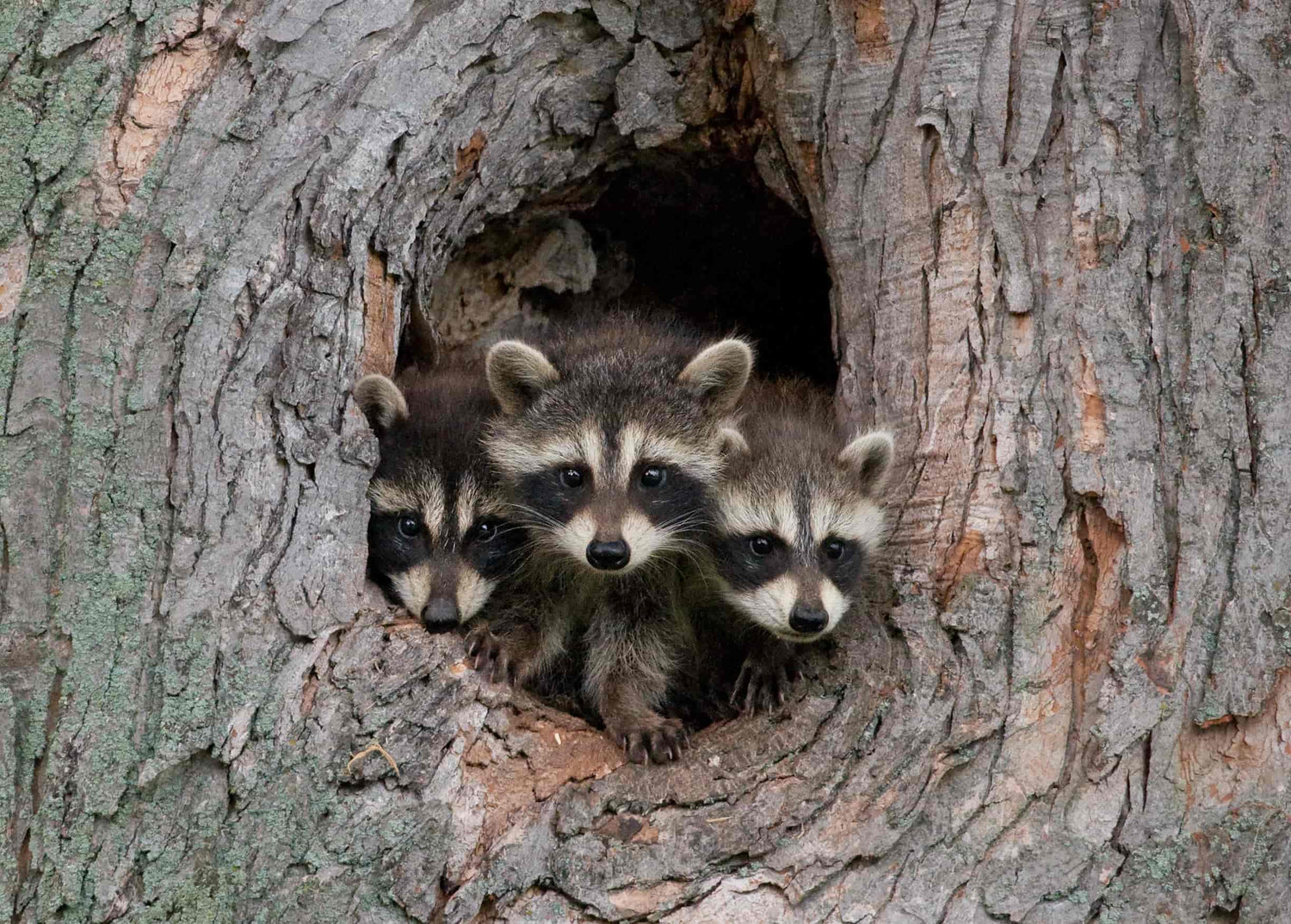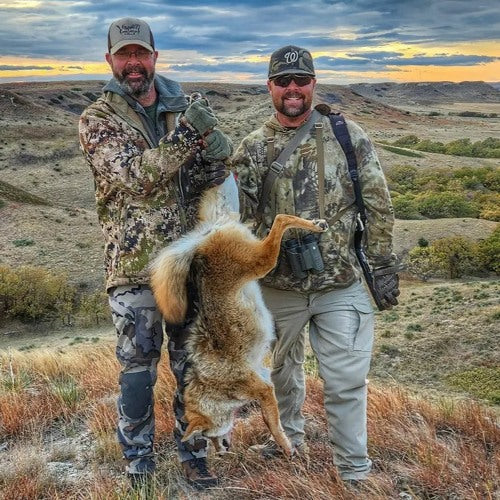The Verminator
By Michael P. - Wildlife & Parks
One of the most important days in Rick Paillet's life was in 1980. He and his best friend, Tim Richard, had ridden dirt bikes into the Smoky Hills, west of Miltonvale, KS. An old lever-action .22 strapped to one motorcycle, and a single-shot .410 to the other. The life-changing moment came after Paillet blew on a recently gifted game call, and a coyote charged after their location. Handicapped by light-shooting weapons, and jet-charged adrenaline, Paillet remembers it took many shots to do the coyote in. His marksmanship and guns have improved. His excitement for predator calls remains strong.
"Honestly, I almost feel guilty getting to do what I do for a living these days."
"I was totally addicted to calling after that first coyote came in," said Paillet, now 59, and living in rural Clay Center, KS. "I'd grown up in a family that hunted coyotes by running them with dogs. After we called in that first one, all I wanted to do was keep calling."
Forty-plus years later, predator calling is Paillet's profession, as a call designer, salesman, educator, and video producer. "Honestly, I almost feel guilty getting to do what I do for a living these days," said Paillet, who is widely recognized as one of the top predator callers in the nation.

Making of "The Verminator"
Paillet's predator calling career started when he met F. Robert Henderson, a famed predator hunter with the Kansas State University Extension Service at a local gas station. Henderson saw the boy's enthusiasm and handed him a call he'd used to call and kill a stock-killing coyote that day.
Paillet used the call often, but within a few years was constructing his own calls...
-
When he wasn't working at the family-owned auto parts store in Clay Center, or hunting, he was soon tinkering with calls, then making his own in the 1990s.
-
He dubbed his fledgling company "Verminator Predator Calls." Paillet, his father, Bob and brother, Jason also began videoing predator hunts to help promote the calls.
-
Eventually he met famed caller Randy Anderson, and the pair teamed up to produce predator hunting DVDs, to be sold to hunters to watch. The attention greatly helped sell lots of Verminator calls.
"Sometimes all it takes is switching to a different call to get something to come in."
At the time his calls were all handheld, and lung-powered. Paillet saw changes coming.
"People were starting to go to electronic callers, and there were plenty of reasons why," said Paillet. They're a lot easier. About anyone can push a button and operate an electronic caller."
Other advantages included being able to put the caller well away from the hunter, who operates it by remote. As well as, making it less likely the animals see the hunter, it can provide some excitement.
"A lot of times I've seen raccoons hit a caller like a unblocked linebacker does a quarterback," said Paillet. "It's also common to put a 100 or more different sounds on a caller." Sometimes all it takes is switching to a different call to get something to come in."
Intrigued by the electronic innovations, Paillet began gathering recordings from as many animals as possible, especially coyotes, foxes, bobcats and raccoons. As well as those predators, he recorded sounds of some of their prey, like cottontails, jackrabbits, woodpeckers and fawns.
Lucky with Lucky Duck
-
His big break on being able to put all of those sounds on an electronic caller came when he was on an Idaho wolf hunt in 2010.
-
"That's where I met Tim Noe, the owner of Lucky Duck calls," said Paillet. "Eventually he agreed to come out with an electronic caller. It was such a huge break for me. I provide all of the sounds for their callers."
-
The timing of the venture couldn't have been better. Interest in predator calling had been growing rapidly the past 20 years. Reasons include being much cheaper than big game hunting, and year-round seasons in most states.

Costs range from $150 to over $700 for a caller, but they last for years. That's a small amount to what some pay for waterfowl gear, or having bird dogs.
With fur prices low, populations of coyotes and raccoons have steadily increased, to the chagrin of many hunters. Deer hunters hunt coyotes to reduce predation on fawns. Bird hunters are trapping and calling raccoons, hoping to decrease the number of nests destroyed every spring.
As well as having produced every sound on a Lucky Duck electronic caller, which numbers well up into the hundreds, Paillet also sells the calls on his Verminator Predator Calls website, verminatorpc.com.
Those who buy from Paillet usually get a more customized caller than they can get anywhere else. They also get something almost unheard of in the 21st century - solid customer service.
True to his rural Kansas Roots
"I guess I'm kind of relic these days when it comes to taking care of customers," said Paillet, who credits his decades in the small town auto parts store and basic rural values. "If someone buys a call from me, I want to get it out and test it before I ship it. I'll also add more sounds, depending on what they want. I have what I call, my favorites "Rick's Killers," collection of calls that can't be gotten any other way. Callers that leave his business may have 200 or more sounds. If a customer has a concern or problem, Paillet handles it himself.
Paillet's relationship with Lucky Duck includes trips to help make predator calling videos for Lucky Duck's Last Stand YouTube programs. Videoing locations have taken him to some of the best predator places in America. His personal love of hunting has taken him even further, hunting things much larger than Kansas coyotes, bobcats and deer.
He's been hunting in Alaska five times for famed species like moose and caribou. He's also made trips hunting sizable predators like wolves, black bears, grizzly bears and Kodiak brown bears. He once sold a prized 1968 Chevy Chevelle to pay for a short-notice, discount-priced to hunt grizzly bears.
-
He still enjoys calling for coyotes, bobcats, and raccoons. Paillet's top bucket list goal is to call in something much larger, and possibly dangerous.
-
"Calling in a grizzly, I mean bringing one that comes in fast, and bouncing in like a coyote does, that's my dream hunt," said Paillet. "My family thinks I'm nuts for even thinking about it, but that's what I really want to do."
-
Thinking back to his first called coyote, Paillet says he'll be far better gunned when calling a grizzly than the single-shot .410 of his youth. He also won't have time to fire nearly as many rounds.
